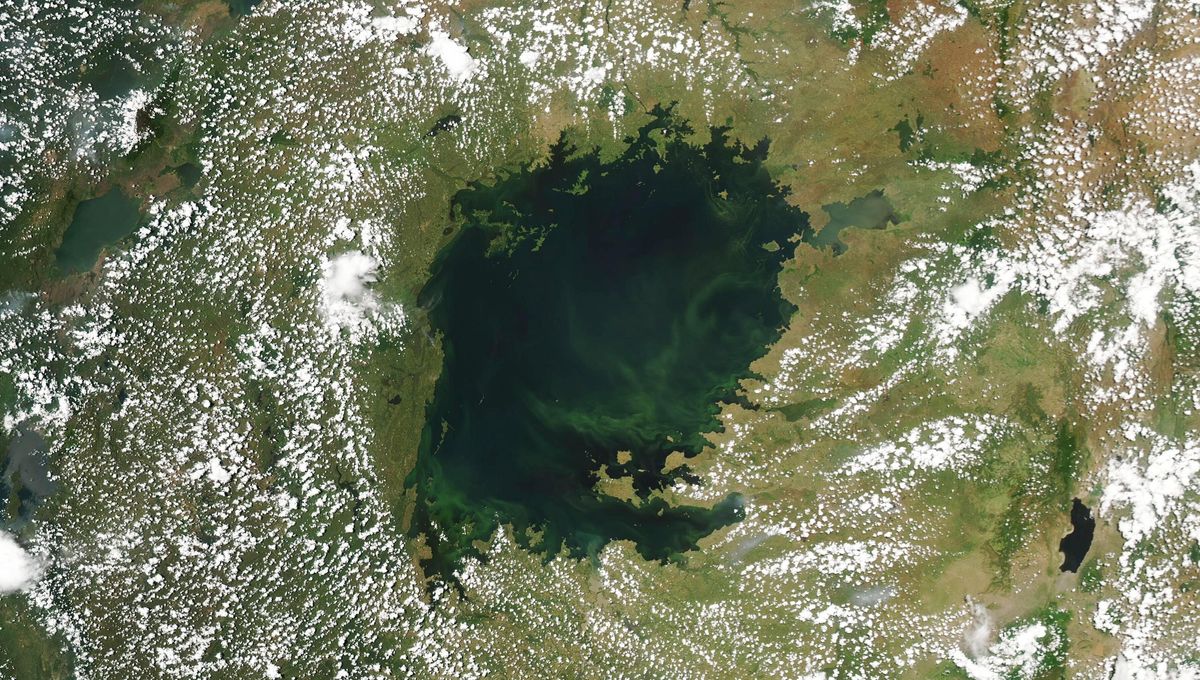
Lake Victoria is Africa’s largest lake (and the largest tropical lake in the world), spreading into three countries and supporting over 47 million people. But it has a significant problem that threatens the future of that support – it’s turning green.
Why is Lake Victoria turning green?
ADVERTISEMENT
Unfortunately, this isn’t because of a St Patrick’s Day stunt like they do with the Chicago River. The lake’s abnormal color is due to the rise of harmful algal blooms (HABs) – specifically, cyanobacteria – the result of a process called eutrophication. This is when a body of water ends up with an excess of nutrients, which triggers a boom in the growth of life like plants and algae.
In the case of Lake Victoria, eutrophication and the resulting HABs have been caused by over a century of human activity sending nutrients into the lake’s water. Agricultural run-off, sewage, and industrial wastewater have all been linked to the problem, as well as the products of slash and burn practices, biomass burning, and industry being sent up into the atmosphere and dumped down into the lake.
Climate change has contributed too. “Blooms are becoming more widespread worldwide because rising temperatures promote cyanobacterial growth and more intense rainfall delivers nutrients from the landscape,” explained researchers from the University of Michigan and Bowling Green State University in a piece for The Conversation.
Why is it a problem?
As we mentioned right at the start, Lake Victoria supports millions of people, who rely on the lake for supplies of fresh water – it’s the second largest freshwater lake in the world, after North America’s Lake Superior. However, HABs render the water unsafe.
The team of researchers from the University of Michigan and Bowling Green State University, for example, recently carried out a study that identified Microcystis, a type of algae abundant in Lake Victoria’s Winam Gulf, was producing significant levels of a toxin called microcystin.
“This is a liver-damaging toxin that can kill livestock, wildlife and humans, especially those whose immune system isn’t working well,” the team explained in The Conversation. “In Winam Gulf, it’s often more abundant than the health limits set by the WHO.”
ADVERTISEMENT
Lake Victoria also supports people by providing food, primarily in the form of fish. Not only can HABs produce toxins that might harm fish and other wildlife, but eutrophication and algal blooms can also deplete the lake of the oxygen these organisms need to survive.
In fact, a recent study found that human-driven eutrophication has driven “major” changes in the food web in a region of the lake called Mwanza Gulf, becoming one of the driving factors for the loss of fish.
The situation is even more dire in some other parts of the lake, in particular the deeper regions. Some are now so oxygen-deficient that they’re no longer capable of sustaining life at all, and as a result, they’ve been dubbed “dead zones”.
What can be done?
Knowing more about the cyanobacteria behind the HABs can help scientists and policymakers figure out how best to tackle them. For example, the Michigan-Bowling Green State team’s study was able to identify which cyanobacteria were most abundant in the Winam Gulf, and which ones were producing concerning toxins. This kind of information can give authorities a better idea of what to look out for, and then send out warnings to residents when these specific blooms appear.
ADVERTISEMENT
However, prevention is also key. Sorting out climate change is going to take some doing, but on a local level, scientists have pointed towards improved guidelines and infrastructure for agriculture and water treatment, reforestation, and protecting existing land from human activity, as ways to stop excess nutrients from getting into Lake Victoria in the first place.
Source Link: Scientists Sounding Alarm As World’s Largest Tropical Lake Turns Green